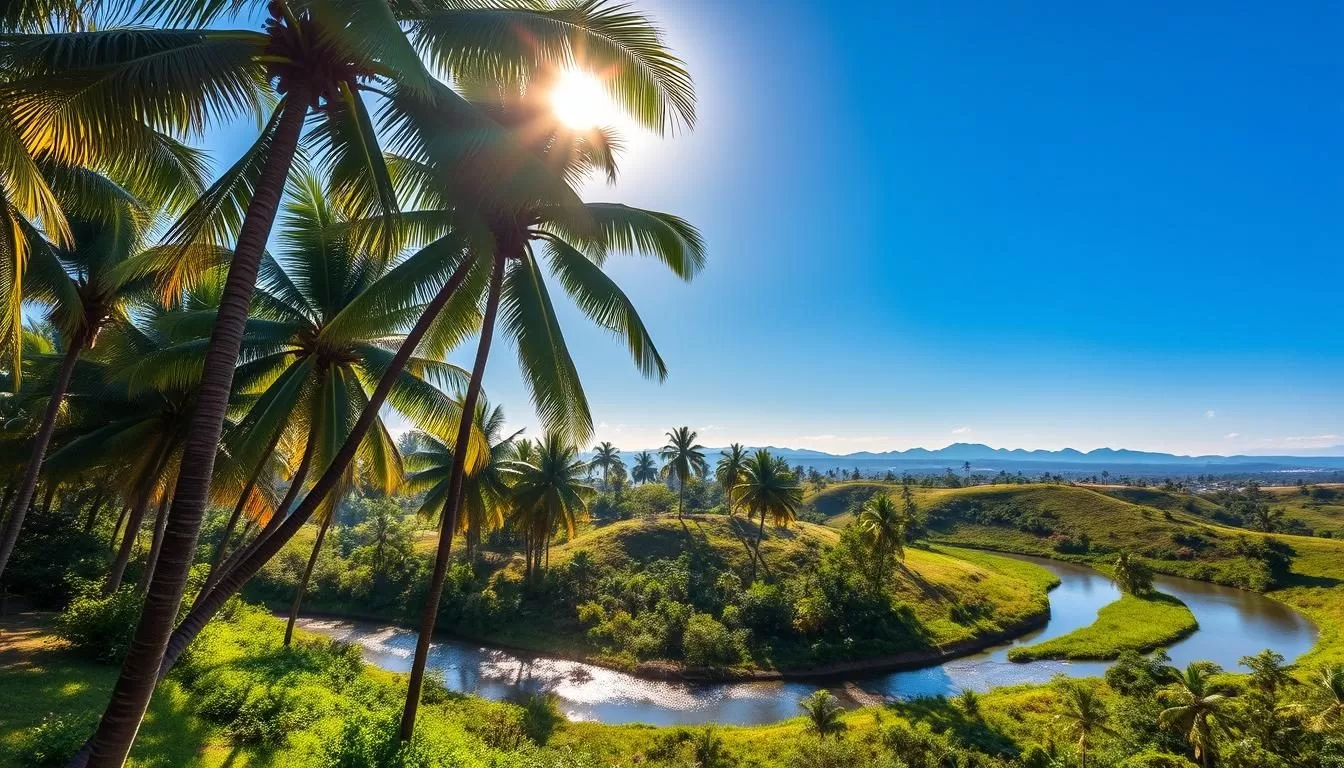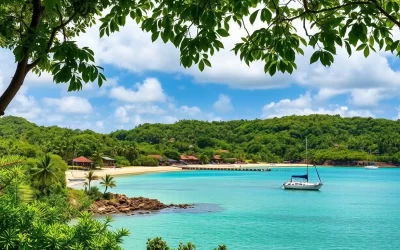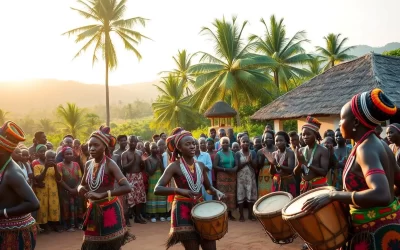When you’re preparing to visit Gabon, understanding the country’s unique equatorial climate is crucial for a successful and enjoyable journey. Gabon’s lush national parks, which are home to a diverse array of wildlife including the elusive forest elephant and the critically endangered western lowland gorilla, are significantly impacted by the seasonal weather patterns.
The country’s climate is characterized by warm temperatures and high humidity, with a dry season from June to August and a main rainy season between October and May. Temperatures remain relatively constant throughout the year, averaging around 77°F (25°C).
To make the most of your time in this beautiful Central African destination, it’s essential to plan your trip according to the weather conditions. By doing so, you’ll be able to fully experience Gabon’s remarkable biodiversity and enjoy the best that this incredible country has to offer.
Understanding Gabon’s Climate Patterns
Gabon’s climate is a complex phenomenon that is worth understanding before planning your trip. Located near the equator, the country’s climate is characterized by relatively stable temperatures throughout the year.
Equatorial Climate Basics
Gabon’s position straddling the equator creates a consistently warm and humid climate. The country experiences minimal seasonal temperature variations, typically hovering around 26-27°C (79-81°F). This stable temperature environment is a hallmark of Gabon’s equatorial climate.
Rainfall Distribution Throughout the Year
While temperatures remain relatively stable, rainfall patterns define Gabon’s seasons. The country receives an astonishing 2.5 meters of rainfall annually, making it one of Africa’s wettest countries. The time of year significantly impacts the amount of rainfall, with two dry seasons and two rainy seasons of varying intensity.
The main rainy season spans from October to May, with April and November typically experiencing the heaviest downpours. Understanding these patterns is crucial to determining the best time to visit Gabon. By considering the climate patterns, you can plan your trip during the most favorable time of the year.
| Month | Average Temperature (°C) | Average Rainfall (mm) |
|---|---|---|
| January | 27 | 250-300 |
| April | 26 | 300-350 |
| July | 24 | 50-100 |
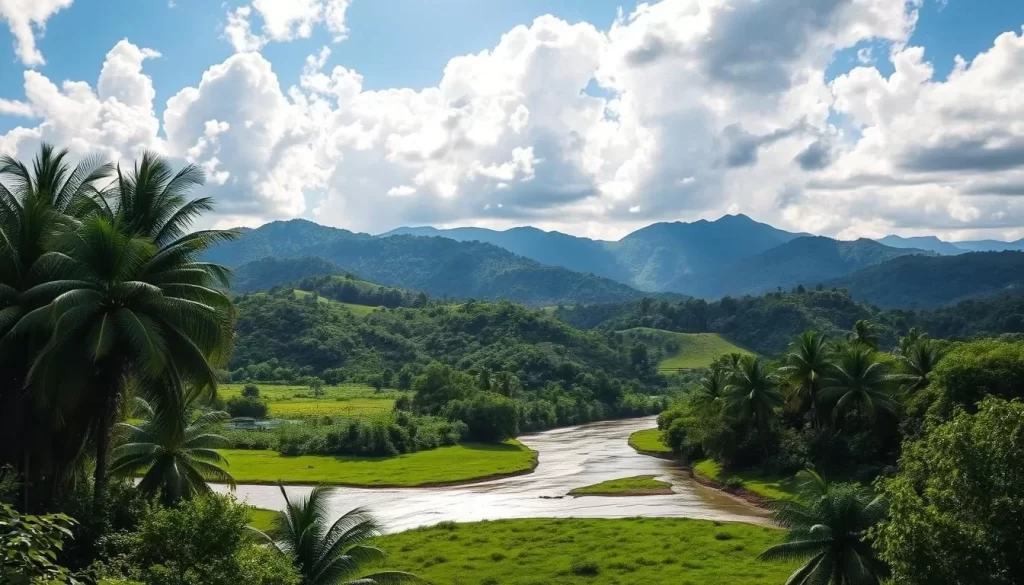
Gabon: Best Months for a Weather-Savvy Trip
To make the most of your Gabon adventure, it’s essential to choose the right time to visit. Gabon’s climate is characterized by a dry season and a wet season, with the dry season being the most favorable for tourists.
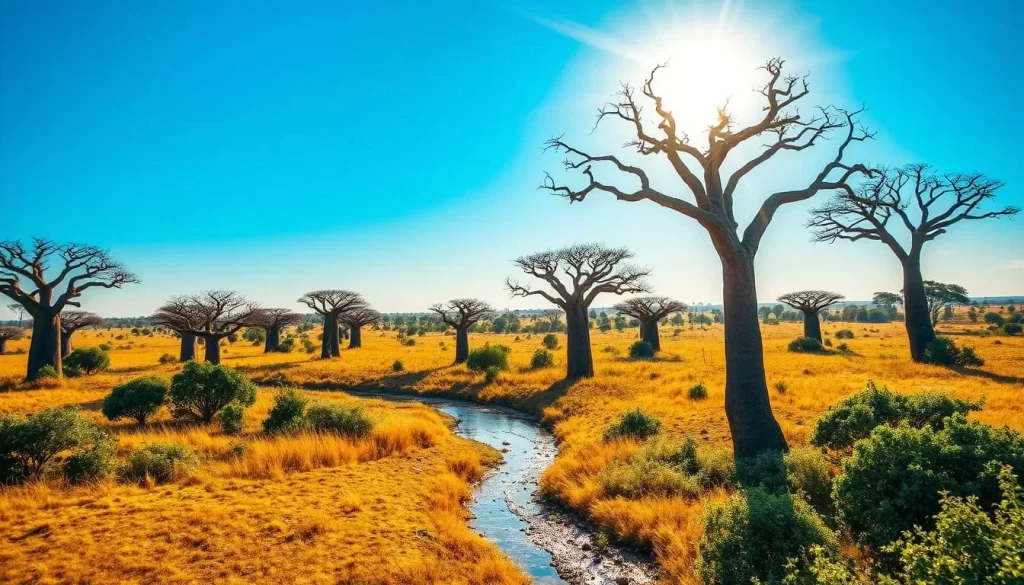
June to August: The Prime Dry Season
The prime dry season, from June to August, offers the most reliable weather conditions for exploration. During these months, you’ll experience significantly reduced rainfall, making it the best time to visit Gabon for wildlife safaris and outdoor activities. The dry conditions provide better road access to remote national parks and wildlife viewing areas.
December to January: The Mini Dry Season
A shorter but still favorable “mini dry season” occurs from December to January. This period presents an alternative window for your Gabon adventure, coinciding with holiday periods and making it convenient for travelers with fixed vacation schedules. The reduced rainfall during this time means fewer mosquitoes and a lower risk of mosquito-borne diseases, enhancing your comfort and safety.
Seasonal Wildlife Viewing Opportunities
As you plan your trip to Gabon, understanding the seasonal wildlife viewing opportunities can greatly enhance your experience. Gabon’s diverse wildlife is present throughout the year, but certain times offer more spectacular sightings.
Coastal Wildlife Calendar
The coastal areas of Gabon, particularly Loango National Park, are renowned for their unique wildlife experiences. From November to mid-January, witness the remarkable spectacle of leatherback turtles nesting on the beaches. During July to October, the coast is a great place to see migrating humpback whales, sometimes accompanied by dolphin pods.
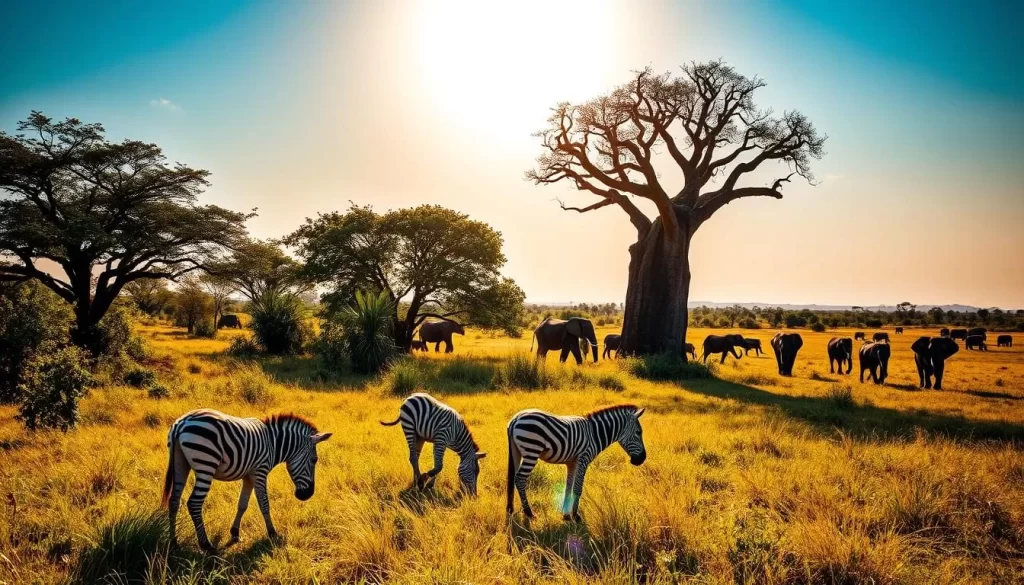
Forest Wildlife Sightings by Season
Forest dwelling wildlife is present year-round, but December through February offers exceptional days for viewing as the abundance of tropical fruit draws creatures like gorillas and elephants towards the coast. During the dry season, animals congregate around limited water sources, making them easier to spot on your time visit. Planning your visit according to these patterns can lead to unforgettable encounters over several days.
Loango National Park: Seasonal Highlights
Discover the natural beauty of Loango National Park, where you can enjoy both beach relaxation and inland safari adventures. This unique national park offers a blend of coastal and forest habitats, making it an ideal destination for wildlife enthusiasts.
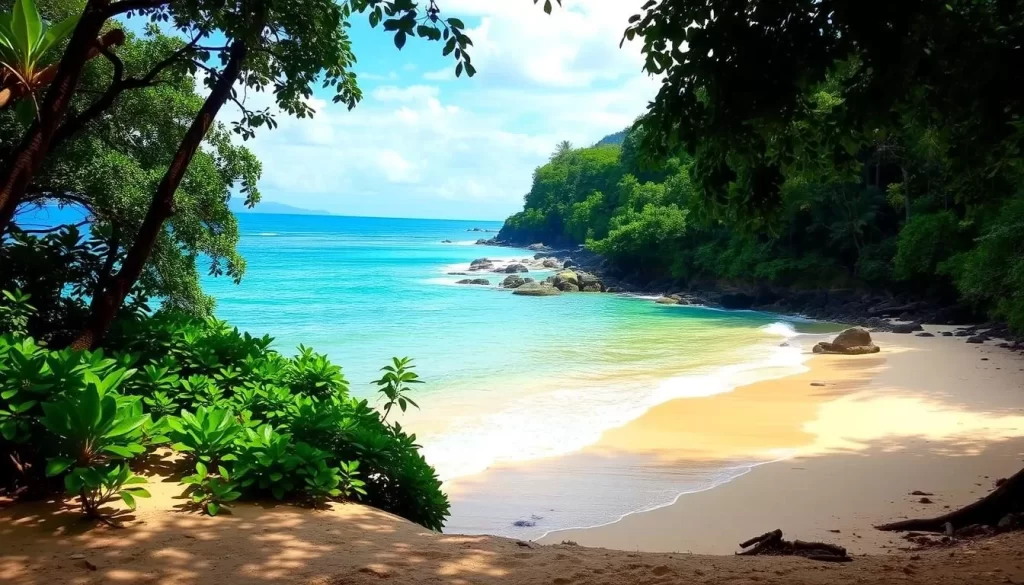
Beach and Forest Safari Combinations
Loango National Park provides one of Africa’s most unique safari experiences, combining pristine beaches with dense forest habitats. You can observe forest elephants, hippos, and occasionally gorillas walking along white sand beaches.
Turtle Nesting and Whale Migration Seasons
From November to January, witness leatherback turtles nesting along the park’s protected coast. The whale migration season from July to October brings humpback whales close to Loango’s shores, adding another dimension to your wildlife experience.
Navigating Gabon’s Rainy Seasons
Gabon’s wet months bring distinct travel challenges and opportunities. The country’s unpaved roads can become challenging during the rainy season, particularly in April and November when rainfall reaches its peak.
Travel Challenges During Wet Months
During the wet months, you’re likely to face difficult conditions. Unpaved roads can quickly turn into muddy obstacles, potentially adding hours to your travel times or making some areas completely inaccessible on certain days.
Tips for Rainy Season Visitors
To make the most of your visit during the rainy season, be prepared for challenging weather conditions. Bring waterproof gear, including boots and backpack covers, to ensure comfortable exploration on wet days. Flexible itineraries are also crucial, as you’ll need to adapt your plans based on daily weather and road accessibility.
Planning Your Visit: Practical Considerations
As you plan your trip to Gabon, it’s essential to consider the practical aspects that will ensure a smooth and enjoyable journey. When traveling to Gabon, being prepared is key to a successful trip.
Health Requirements and Preparation
Before visiting Gabon, you must ensure you have the necessary health preparations. Yellow fever vaccination is mandatory, and you should plan ahead, especially if you’re coming from the U.S., due to potential vaccine shortages. Additional health precautions include hepatitis A and typhoid vaccinations, as well as anti-malaria medication.
Packing Essentials by Season
Your packing list will vary depending on the season of your visit Gabon. During rainy days, waterproof gear is essential, while lightweight, breathable clothing is necessary year-round. Gathering accurate information about current travel conditions is also crucial, as Gabon’s infrastructure can change rapidly. Allocating extra days in your schedule for potential delays will make your trip more enjoyable, following this guide.

Conclusion: Making the Most of Your Gabon Adventure
To make the most of your trip to Gabon, consider the seasonal variations that impact wildlife viewing and outdoor activities. Gabon’s 13 national parks, covering 10% of its land, are home to incredible wildlife, including gorillas and forest elephants. Timing your visit with the right season enhances your experience, whether you’re exploring the coast or delving into the forest.
The above is subject to change.
Check back often to TRAVEL.COM for the latest travel tips and deals.
